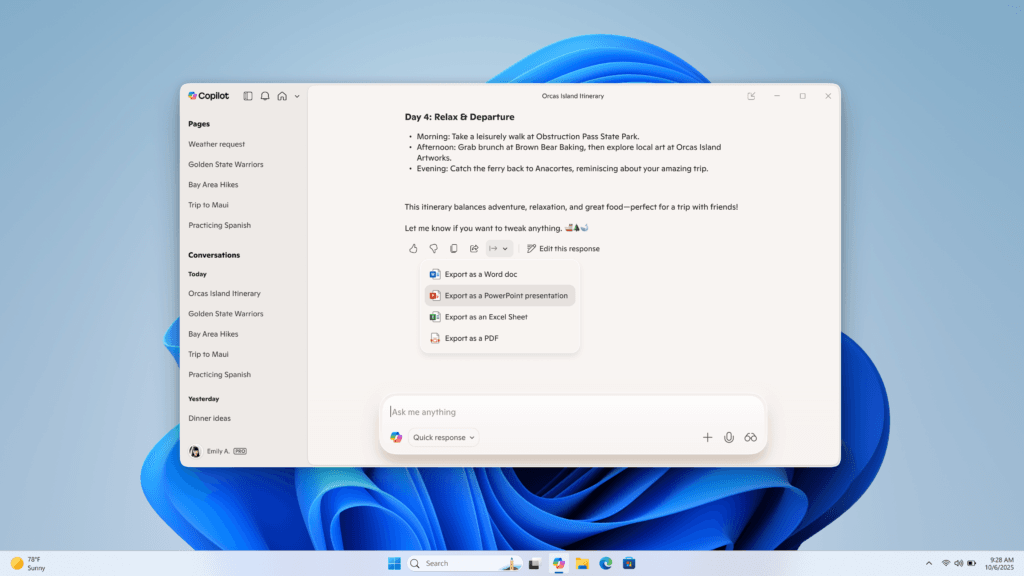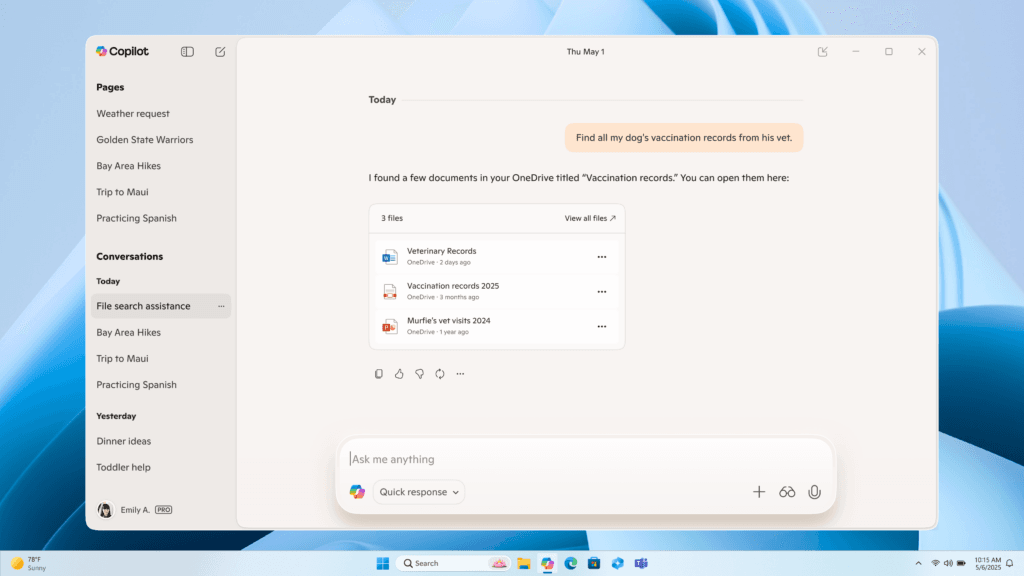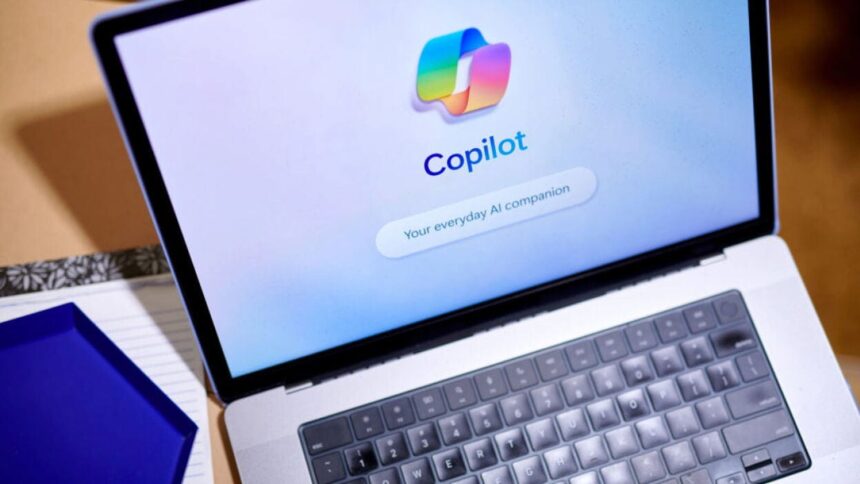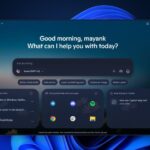Microsoft is back with another update to Copilot, and at this point, it’s hard to keep track of everything it can do. The journey of Windows assistants has been full of ups and downs — from Cortana’s early days to the much more capable Copilot.
Now, Microsoft is taking a bigger step by introducing a major upgrade: Copilot in Windows can not only chat but also create Office documents and even connect (if you choose) with Outlook and Gmail to check your emails and calendar.
This marks a logical step forward — combining creation, communication, and organisation in one place, without having to jump between multiple apps. Microsoft says this new feature will first roll out to Windows Insiders and later to all Windows 11 users.
Another handy addition: if Copilot’s response runs long (about 600 characters or more), you can export it directly as a Word, Excel, PowerPoint, or PDF file with just one click.
What’s new in Copilot in Windows 11
Create and export in one click, from the chat itself
Copilot can now turn your ideas into fully editable documents. You can type requests like “make a project outline and move it to PowerPoint” or “build a cost breakdown table and send it to Excel.”
When the answer is long enough, a quick-export button appears, letting you save it in Office or PDF format instantly. This bridges the gap between “brainstorming” and “ready-to-share,” ensuring your work is always saved and easy to reuse.

Optional Outlook and Gmail Integration
Another highlight is the optional connection with your personal accounts — Outlook, OneDrive, Gmail, Google Drive, Calendar, and Contacts. If you choose to link them, Copilot can search for specific emails, find attachments, or check your upcoming events to create things like weekly summaries — all without leaving the chat.
This update aligns perfectly with Microsoft’s broader push around OneDrive and the new Windows app on the horizon. The upcoming tools include a photo gallery, smart recognition, and editing features — plus an AI-driven “Photos Agent” that can respond to prompts such as “show me my wedding pictures and make an album.”
It’s all part of Microsoft’s ongoing effort to simplify workflows — fewer open windows, more done through AI.
What does it mean for users and companies?
Frictionless productivity
For everyday users, this update brings Copilot closer to what it was meant to be: turning ideas into finished documents without worrying about templates or saving steps.
For companies, it minimises context switching, keeps drafts consistent, and speeds up the creation of presentations, reports, and summaries that can later be refined by teams.

And the Office ecosystem?
This move fits with Microsoft’s broader strategy — expanding free Copilot Chat in Office and deepening its link with OneDrive and the cloud.
The direction is clear: Office is becoming a connected service layer, while Copilot serves as the main interface to access and create within it.
How it fits into the “Windows experience” of 2025
Microsoft is shaping a more conversational Windows, where Copilot can create, search within your files or emails, and organise information for you.
For anyone juggling tasks across Outlook, Word, and Drive, the real benefit lies in starting everything from one place — planning briefings, drafting meeting notes, or sketching out a presentation’s first version — all without ever switching apps.





